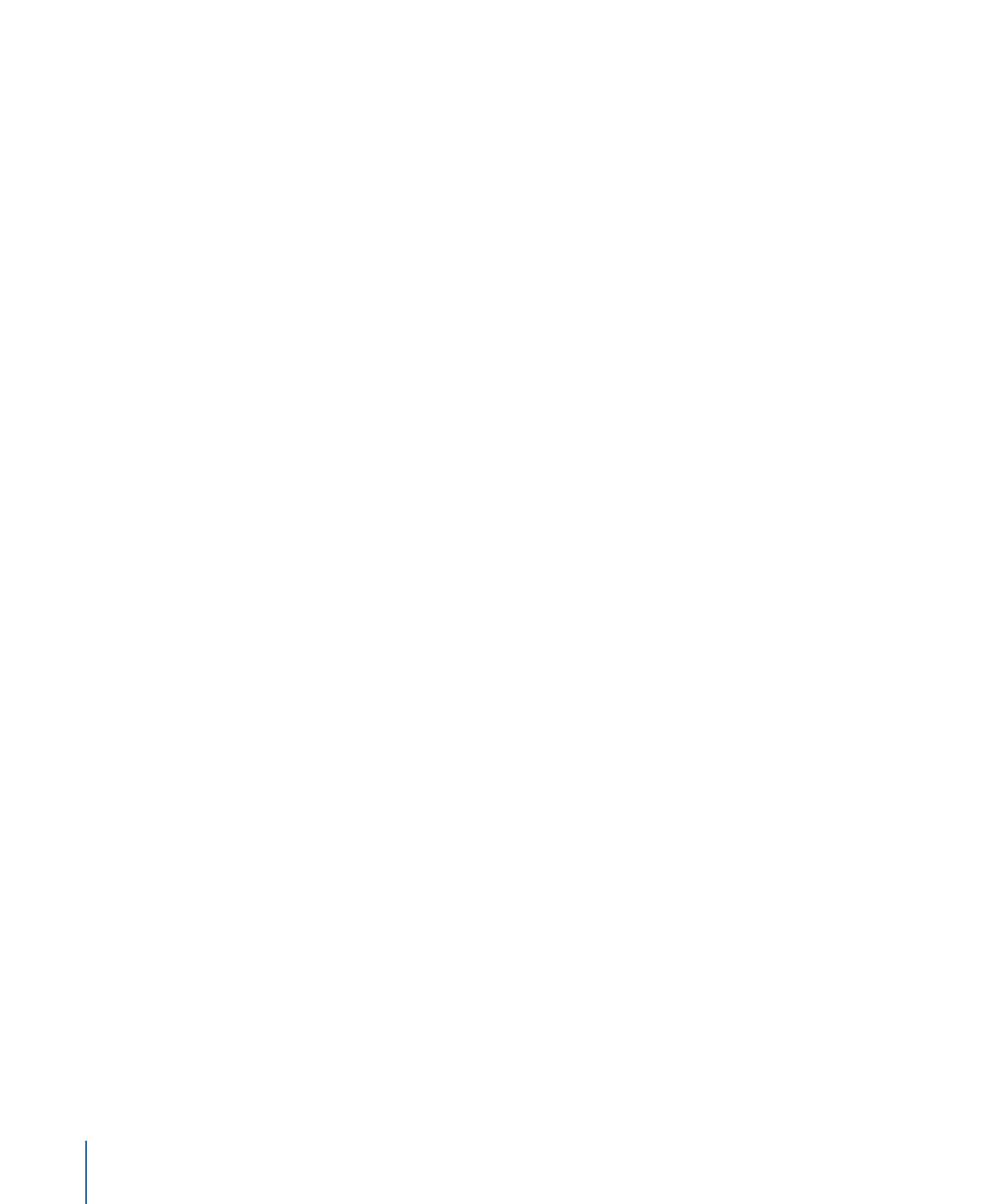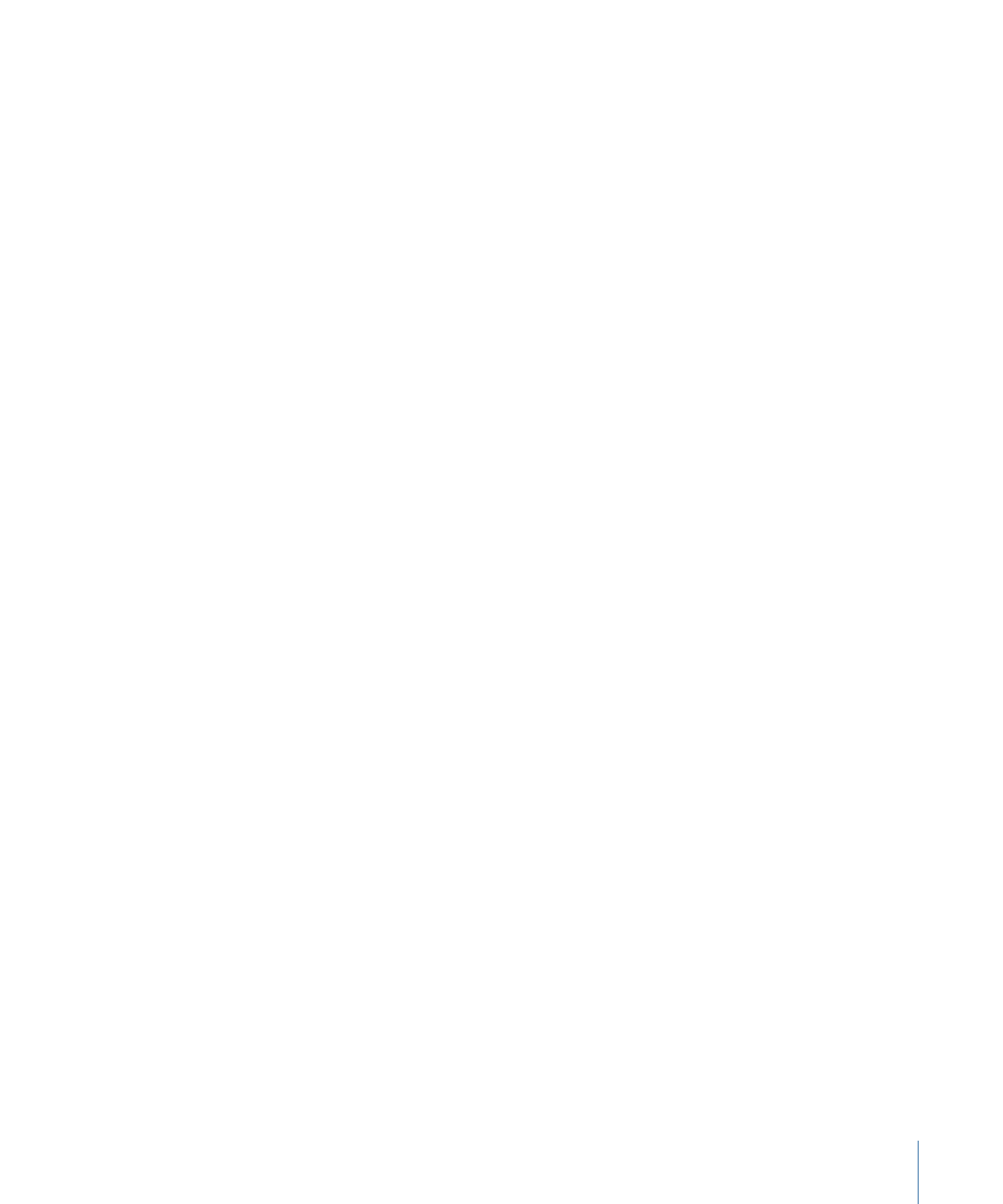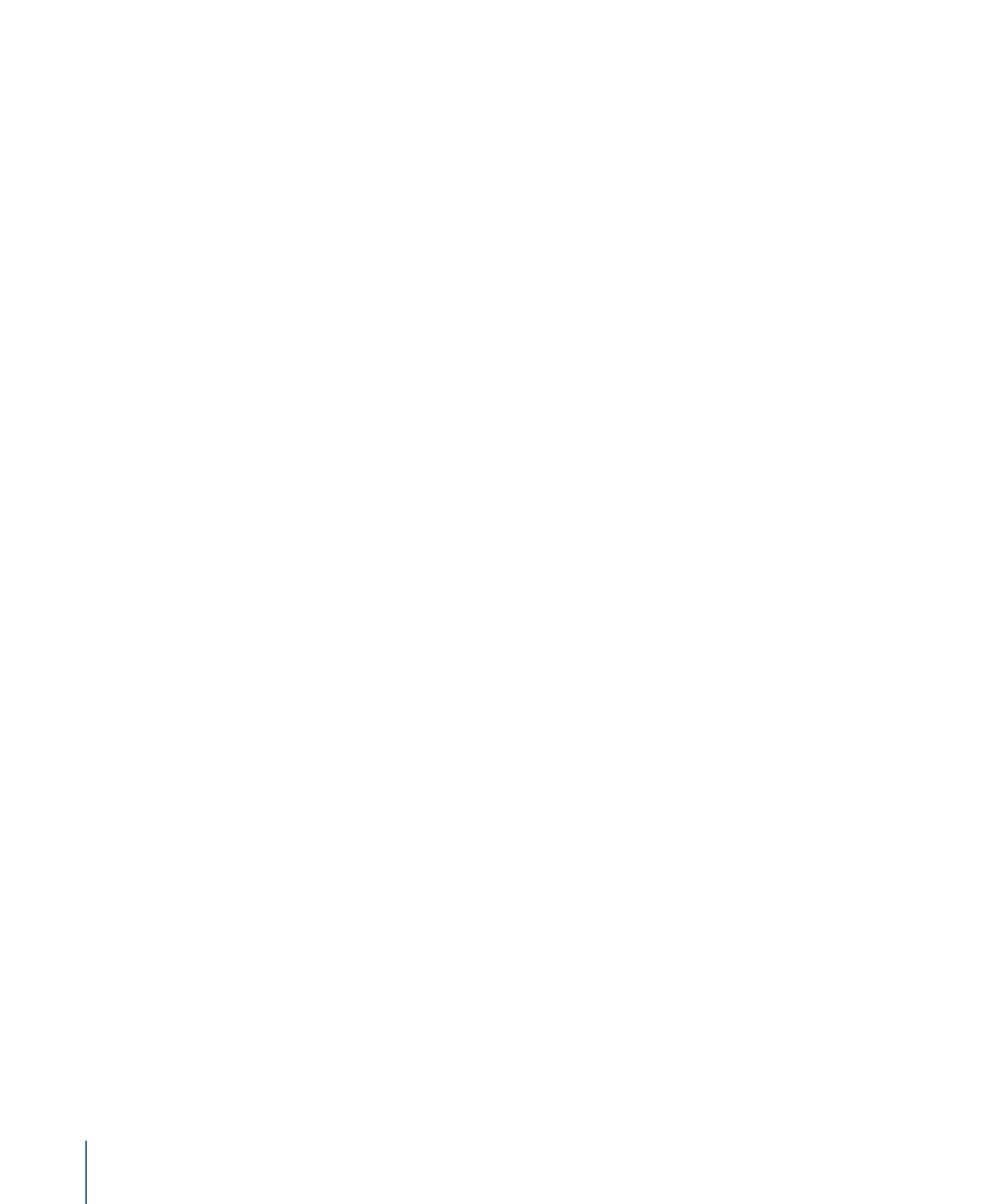
Object
This pane, also referred to as the Object Inspector, contains controls that vary depending
on the type of object selected. The name of the pane is also context-sensitive, changing
depending on the type object selected. The different Object Inspectors are described
below:
• Object: Appears when there is no selected object. There are no parameters in the Object
pane.
• Image: Appears when an image, image sequence, movie, or drop zone is selected.
When media is selected, this pane contains the Drop Zone checkbox, the state of which
determines whether the image selected is a drop zone target. When the checkbox is
selected, additional parameters become available. For more information, see
Drop Zone
Parameters
.
• Group: Appears when a group is the selected object. The pane contains the Type
parameter, which allows you to convert a group from 2D to 3D, and vice versa. A 2D
group has different available parameters than a 3D group.
When set to 2D, Fixed Resolution parameters become available, which allow you to
manually define the size of a group. By default, Fixed Resolution is disabled, and the
size of the group is determined by the layers in that group. For more information, see
Fixing the Size of a Group
.
Note: When selected, Fixed Resolution crops the group to the size specified in the
Fixed Width and Fixed Height parameters around the anchor point of the group.
When set to 3D, the Flatten and Layer Order parameters become available. When the
Flatten checkbox is selected, all elements in the 3D group are flattened like a card or
billboard. When the Layer Order checkbox is selected, the project elements are sorted
by their order in the Layers list rather than their order in Z space. For more information,
see
Layer Order and Depth Order
.
• Project: Appears when the Project object (located at the top of the Layers list) is selected
and contains the Publishing and Snapshots pane. The Publishing pane lists all parameters
set to be published in a template (except for filter onscreen controls). The Snapshots
pane is used to create different display aspect ratios for templates. For more information
on publishing and templates, see
Creating Templates for Final Cut Pro X
.
• Camera: Appears when a camera is selected and contains controls specific to a scene
camera, including angle of view and depth of field parameters. For more information
on using cameras, see
Cameras
.
• Light: Appears when a light is selected and contains controls to change the light type,
color, intensity, and falloff. When the Shadows checkbox is selected, parameters become
available that control the shadow cast by a Point or Spot light. For more information
on working with lights and shadows, see
Lighting
or
Shadows
.
44
Chapter 2
The Motion Interface

• Rig: Appears when a rig is selected and contains buttons that allow you to choose
widget types to map multiple parameters to a single control. For more information on
rigging, see
Using Rigs
.
• Media: Appears when an item is selected in the Media list of the Project pane. (For
more information see
Project Pane
.) These parameters deal mostly with attributes of
the file on disk or how the file is interpreted by Motion. Because multiple project objects
can reference a single media file, the pane contains a list of linked objects. Making
changes in this pane affects all objects that refer to the selected media file. For more
information on working with media parameters, see
Source Media Parameters
.
• Text: Appears when text is selected and contains all controls that affect the text. The
Text Inspector is divided into three panes:
• Format: Contains standard controls to adjust font, size, tracking, kerning, justification,
alignment, line spacing (leading), and so on. It also contains a large text-entry field
where you can edit the contents of text used in your project. The Format pane also
includes a pop-up menu of preset text styles.
• Style: Contains controls to adjust the fill, outline, glow, and drop shadow of selected
text. Each section is grouped and can be turned on or off by selecting the checkbox
next to the category name. The Style pane also includes a pop-up menu of preset
text styles.
• Layout: Contains paragraph style controls to set text on a path, direction, rendering,
how text objects are affected when behaviors are applied, and how anchor points
are used. This pane also contains controls to create a type-on effect or to modify text
path options. For more information on working with text parameters, see
Creating
and Editing Text
.
• Mask: Appears when a mask is selected and contains controls to change the mask’s
shape, to define how multiple masks interact, to invert a mask, to smooth the shape
of a mask or adjust its softness, or to change the color of the mask in the Canvas. This
inspector also contains position value sliders for mask control points. For more
information on working with mask attributes, see
Mask Parameters
.
• Image Mask: Appears when an image mask is selected and contains Mask and Mask
Options controls. These controls allow you to change the mask’s source, reference
frame (if the source is a clip), offset, wrap mode, source channel, blend mode, and so
on. For more information, see
Applying Image Masks to a Layer
.
• Shape: Appears when a shape is selected and contains controls that affect the shape.
The controls are divided into four panes:
• Style: Contains controls to modify the fill and outline of a shape and the brush type
of an outline or paint stroke. This pane also includes a pop-up menu of preset shape
styles.
45
Chapter 2
The Motion Interface

• Stroke: Contains controls for modifying paint strokes. Use these controls to set stroke
color and brush scale, and to adjust opacity, spacing, width, and other parameters.
• Advanced: Contains controls that allow the dabs of a paint stroke to be animated
like particles.
• Geometry: Contains controls that allow you to change the shape type, to close or
open a shape, to smooth a shape, and to adjust the position of a shape’s control
points using value sliders. For more information on working with shapes, see
Using
Shapes, Masks, and Paint Strokes
.
• Emitter: Contains controls for modifying a particle emitter, including emitter shape,
space (2D or 3D), angle, and range. This pane also provides access to cell controls. For
emitters with multiple cells, these controls affect all cells. For more information on
using particles, see
Working with Particles
.
• Particle Cell: Contains controls for modifying particle cells. Particle cells can only be
selected in the Layers list or Timeline layers list. This pane contains controls for attributes
such as birth rate, speed, angle, and color.
• Replicator: Contains controls for modifying replicator attributes, including shape, space
(2D or 3D), pattern, size, and cell controls. For more information on using the replicator,
see
Using the Replicator
.
• Replicator Cell: Contains controls for modifying replicator cells. Replicator cells can only
be selected in the Layers list or Timeline layers list. This pane contains controls for
attributes such as angle, color, and scale.
• Generator: Displays the parameters and attributes of the selected generator, such as
the Center, Size, and Intensity parameters of a Lens Flare generator. The parameters
listed depend on the selected generator. For more information on generators, see
Working with Generators
.
• Audio Track: Contains controls for adjusting an audio file selected in the Audio list of
the Project pane or in the Audio Timeline, including level, pan, and output bus. For
more information on working with audio, see
Working with Audio
.
• Master: Contains controls for adjusting a Master audio track selected in the Audio list
of the Project pane, including level, pan, and the output bus of audio tracks in the
project. For more information on working with audio, see
Working with Audio
.